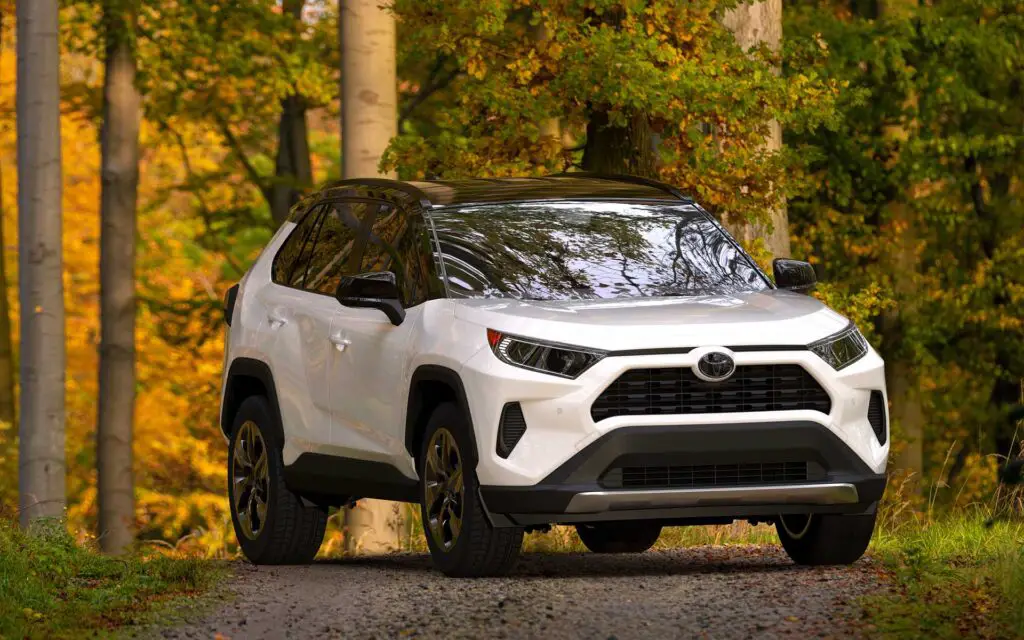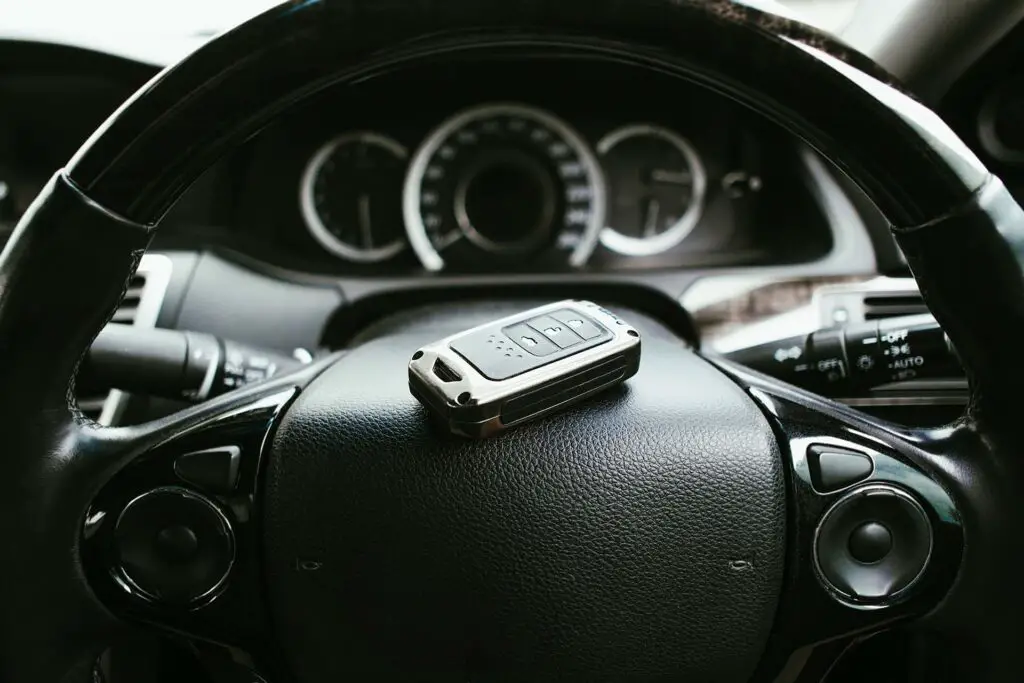Fuel efficiency has never been cooler – the sheer number of hybrids cruising around is a testament to this fact. But how does a hybrid car save fuel exactly? Curious how it all works? Let’s uncover the science behind how these four-wheelers are able to sip fuel rather than straight-up chug it.
The Quick Downlow – How Does a Hybrid Car Save Fuel?
So, how do hybrid cars improve fuel efficiency? Well, these vehicles combine a gasoline engine with an electric motor, allowing the two to share the load. Regenerative braking helps recharge the battery, while features like stop-start technology and electric power steering reduce consumption, especially in city driving.
Aerodynamic designs and lightweight materials further improve efficiency, while continuously variable transmissions keep the engine running at optimal levels. By using these clever technologies, hybrids stretch every drop of fuel, giving you a more efficient ride and saving you money in the long run.

Everyone and Their Mothers Are Jumping on the Hybrid Bandwagon
Just last year, big things happened in the auto world. For the first time ever, the sales of both electric vehicles (EVs) and hybrids zoomed past the million mark. But guess who was leading the charge? That’s right – hybrids, with nearly 1.5 million units sold in the US alone!
With these numbers, these eco-friendly four-wheelers made up more than 16% of all light-duty vehicle sales, which is no small feat. And if you’re thinking this is just a passing trend, think again. The newest data from the first half of 2024 is showing no signs of slowing down.
Now, why is everyone suddenly so obsessed with hybrids? Is it the sleek designs, the fuel savings, or maybe just the bragging rights? Whatever the reason, one thing’s for sure – these rides are transforming from a niche option to a mainstay on the road.

What Makes Hybrid Cars So Special?
Blending gasoline and electricity – it sounds so crazy it might just work, and well, it did. Hybrids might look like the average four-wheeler at a car dealership, but under the hood, they’re doing some pretty cool things.
Their behind-the-scenes engineering takes the traditional engine and mixes it with electric power to create a driving experience that’s smoother, quieter, and way more efficient. The system figures out when to use each power source – or both! – to save fuel without sacrificing performance.
It’s no wonder hybrids are turning heads everywhere they go! Here are some popular models you’ve definitely caught a glimpse of on city streets:
- Toyota Prius,
- Toyota Camry,
- Honda Accord Touring,
- Kia Sportage,
- Hyundai Tucson.
Regenerative Braking – What Is It, and Why Is It Awesome?
Just imagine turning every stop into a mini power-up for your ride! Well, that’s essentially what regenerative braking does. Instead of wasting all that energy when you hit the brakes, hybrids use it to recharge their batteries. It’s like your car saying – thanks for stopping, here’s some extra juice!
The more energy the vehicle captures through regenerative braking, the less work the gas engine has to do. This means fewer trips to the pump and therefore, cutting down expenses that come with owning a set of wheels. Just look at these numbers:
| Vehicle | Average yearly cost |
| Gasoline | $2,430 |
| Hybrid | $1,140 |
| Electric | $1,000 |
Plug It In, Charge It Up – How Do PHEVs Work?
Like conventional hybrids we’ve just talked about, plug-in hybrids (PHEVs) have both a gas engine and an electric motor. But here’s the kicker – you can charge them up just like you would a fully electric vehicle. Once charged, they can drive a certain distance using just electric power – no gas needed whatsoever!
So, how does this impact fuel economy? Well, it’s pretty simple – PHEVs let you cover more ground using electric power, meaning you’re using less gas overall. If your daily commute is short, you might not need to touch the gas tank for days!
Even when the battery runs low and the gas engine kicks in, the electric motor is still there to assist, keeping fuel consumption lower than in a traditional car. And with the average American driving over 14,000 miles each year, over time, this can seriously cut down ownership costs.

How a Hybrid Car Saves Fuel – It’s All About Sharing the Load
All in all, hybrids are the prime example of how teamwork makes the dream work. In this case, it means the gas engine doesn’t have to work as hard or as often, making each drop of fuel stretch that much further. This is the biggest secret behind the fuel-efficient tendencies of these four-wheelers, but they also use other features to really make them worth your while (more on that in just a second).
Cutting Fuel Use at Every Red Light – Stop, Start, and Save
With this harmonious teamwork, city driving just got a whole lot smarter. In a traditional car, idling at a red light or in heavy traffic means burning fuel without getting anywhere. But hybrids? They’ve got that covered. When you come to a stop, the gasoline engine simply shuts off, leaving the electric motor to keep the essentials running.
As soon as the light turns green, the engine smoothly powers back up, and off you go – without wasting gas. This stop-start feature is a game changer, especially in cities where sitting at lights and crawling through traffic is an everyday occurrence. Over time, all those little moments add up, cutting fuel use dramatically. Who knew living in one of the cities with the worst drivers had its perks?

Going the Extra Mile – Aerodynamics and Lightweight Materials
Now, let’s talk about the other aspects that make hybrids fuel-efficient machines, starting with the design. You’ll notice that most models have aerodynamic designs, but this isn’t just about turning heads.
This shape works wonders in reducing wind resistance and making sure the four-wheelers don’t waste any extra energy fighting against the breeze. From their rounded edges to carefully placed spoilers, hybrids are built with aerodynamics in mind, helping them cruise further on less fuel.
Lightweight Champions Can Conquer Fuel-Efficiency Too
Hybrids are the featherweights of the auto world and this also makes them champions of fuel economy. By going lighter with materials like carbon fiber, aluminum, and even magnesium, hybrids cut down on their overall weight, which means the engine doesn’t have to work as hard to move them. Less weight, less fuel, more savings – it’s that simple!

Rolling With Less Effort – Tires That Work Smarter, Not Harder
Hybrids aren’t just about high-tech engines and sleek designs – their tires are doing a lot of the heavy lifting too, but in a very smart way. Be it summer or winter tires, they are specifically designed to be narrower and have lower rolling resistance, which basically means they glide along the road with less effort.
The result? The engine doesn’t have to burn as much fuel to keep the car going. At first glance, it doesn’t seem like a significant improvement, but over time, it can add up and make your wallet happy. Plus, many hybrid tires are kept at a higher pressure, meaning less drag and more smooth sailing.
The Continuously Variable Transmission – Smooth, Efficient, and Fuel-Saving
Out of almost 500 models available in the US, around 22% of them have a thing called Continuously Variable Transmission (CVT). This system allows the engine to operate at the perfect speed, no matter how fast (or slow) you’re going.
This means no jerky shifts, just seamless acceleration and deceleration. And here’s the kicker – the engine gets to stay in its “sweet spot,” burning less fuel while delivering the same power. Pretty cool, right?
Electric Power Steering and Air Conditioning Can Also Make a Real Difference
In most cars, power steering and air conditioning are powered by the engine, but in hybrids, they’re run by electricity. That means the engine doesn’t need to be working overtime to keep you comfortable or to make those smooth turns. So, not only do you save on gas, but you also get a quieter, more efficient ride. Hybrid perks just keep on rolling!

No Such Thing as Perfect – Here’s Where Hybrids Hit a Speed Bump
No matter how much those gearheads try to convince you that their ride is the ultimate machine, every four-wheeler has its quirks. Sure, hybrids are great at saving fuel, but even they can hit a few bumps in the road. So before you get too excited about buying one, here’s a breakdown of some hiccups:
- Higher upfront cost – hybrids often come with a higher price tag than their gas-only counterparts,
- Battery replacement can be pricey – while hybrid batteries are built to last, they eventually need replacing, and that can cost a pretty penny,
- Repairs may cost more – because hybrids use more complex technology, repairs can sometimes be more expensive and not every mechanic will be equipped to handle these specific issues,
- Fewer fuel savings on highways – outside of the city, the gas engine takes over more often, so the fuel savings aren’t as dramatic,
- Smaller gas tanks – to make room for the battery, hybrids typically have smaller gas tanks, meaning more frequent fill-ups, though you’ll still be using less gas overall,
- Battery weight – hybrids carry around a heavy battery, which can impact the overall performance and take a little bit away from those savings, especially in models that aren’t as light.

Is It Time To Jump on the Fuel-Saving Bandwagon?
So, are hybrids the future or just a really cool trend? Well, considering they’re saving fuel, cutting emissions, and making everyone look cool behind the wheel, it’s safe to say they’re here to stay.
But how do you know if this eco-friendly four-wheeled powerhouse is the right choice for you? Well, it’s best to put the numbers to paper and really think it through. At the end of the day, the choice is yours. Just remember, with great fuel efficiency comes great responsibility – mostly to brag about how much you’re saving!








